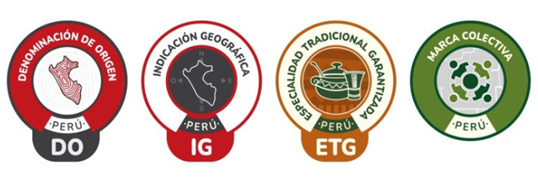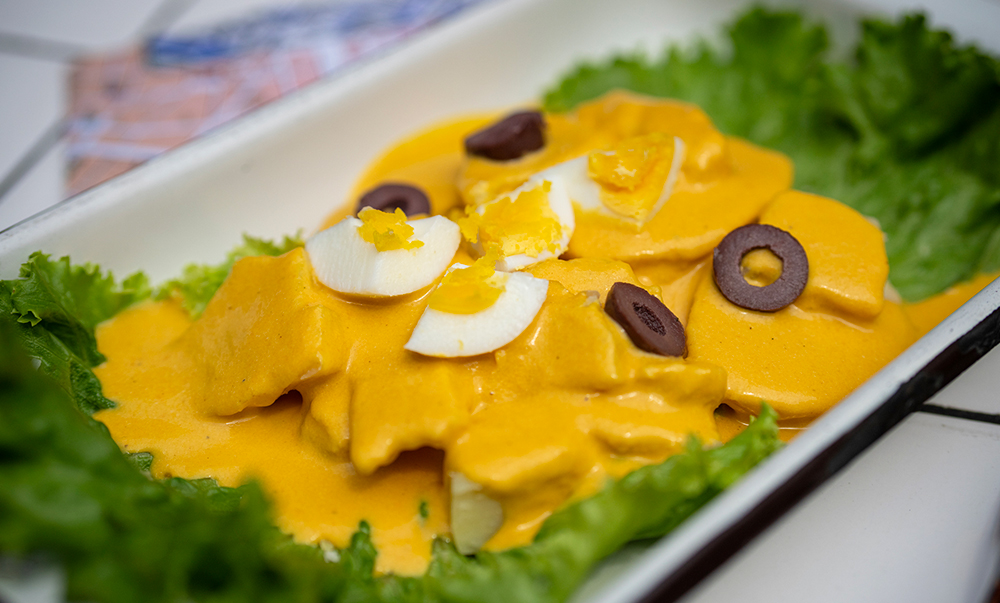Famed as a world class cultural and culinary destination, Peru has taken decisive steps to protect its traditional recipes and emblematic products using IP. Geographical indications (GI or IG in Spanish) and traditional speciality guaranteed (TSG or ETG in Spanish) labels have been introduced through INDECOPI to preserve the country’s rich gastronomic heritage.
Internationally, Peru has forged a reputation as one of the top cultural and culinary destinations and garnered an array of acknowledgments for its history, cultural influence and biodiversity. In view of the increasing presence of Peruvian cuisine in other countries, Legislative Decree No 1397 and Supreme Decree No 170-2021-PCM, officially wrote the GI and TSG labels into Peruvian law as new IP elements, to protect the ingredients and culinary techniques characteristic of Peruvian cuisine (see the IP Blog on introduction of GIs and TSGs in Peru).
Like Appellations of Origin (AO or DO in Spanish) seals, collective marks and certification marks, GIs and TSGs are distinctive signs of quality making it recognizable that a product meets standards as to its origin, composition, creation, preparation or production.
Now, four months on from the inclusion of TSGs and GIs as IP elements in Peru, seemed a good time to examine the efforts that INDECOPI, the Peruvian IP agency, has put into promoting the communication and implementation of these distinctive signs as tools allowing business agents in the food and tourism industry to give added value to their products and position themselves in new markets.
- Recognition of the first Peruvian GIs and TSGs
In the past three years, INDECOPI has recognized the first GI and the first two TSGs from Peru:
- In 2023, by Decision No 13299-2023, INDECOPI recognized Pan de Anís de Concepción as the first Peruvian TSG, after confirming that, over more than 30 years, producers of artisan bread in the Junín region’s Concepción province have continued using traditional ingredients, such as stoneground wheat flour, aniseed and springwater, applying a certain method for preparing, dividing and rounding the dough, and employing unique utensils and wood fired ovens.
- In 2024, by Decision No 27856-2024, INDECOPI recognized Sal de Maras as the first Peruvian IG, noting the geographical and climatic conditions, and historical and human factors that give this mineral its special features, such as a dry climate and the particular topography of Salineras de Maras, production methods on terraces and early prehispanic irrigation systems which have been put to use until the present day by producer families in the Maras district of the Urubamba province in Cusco.
- In 2025, by Decision No 15594-2025, INDECOPI recognized Papa a la Huancaína as the second Peruvian TSG. It highlighted the preparation process of this emblematic dish for the Huancayo region which has remained the same for almost eighty years. The process involves a batán, an ancestral utensil made of stone used to grind ingredients such as yellow chili peppers, soft cheese, milk and salt, which gives Papa a la Huancaína its characteristic flavor and creamy texture.
The recognition of these first GIs and TSGs is not just important to showcase the richness of Peruvian cuisine, they also serve as a springboard for encouraging the recognition of other foods and recipes representative of Peruvian cuisine. Recently, following the popularity of the Pan con Chicharrón breakfast on social media after winning the online Breakfast World Cup, members of the gastronomic trade could consider applying for its recognition as a TSG. However, one of the challenges to be met to register any TSG is achieving consensus in the trade over the characteristics that make the dish special. Particularly, over the details of its preparation and the ingredients that have been used historically.
- Implementation of official seals for the distinctive signs of quality
In April 2025, by Decision No 006-2025/DSD-INDECOPI, INDECOPI approved the official seals for identifying that a product or culinary preparation qualifies for a GI or TSG label, AO or collective trademark, by reference to attributes of authenticity, tradition and quality. The approval of the official seals is accompanied by guides on their use, to guarantee they are communicated correctly and used adequately. The four symbols shown below have been recognized:

This catalog of seals was launched in response to the need to showcase the distinctive signs of quality, in home markets and internationally. The use of quality symbols or seals is extremely important for identifying quality-differentiated products. From one angle, consumers need visual elements that convey the attributes of the products offered to them, to build trust in their authenticity, especially in digital media. From another, producers of this type of products also need visual elements they can use to communicate their attributes, both to differentiate them to consumers and for their verification by authorities (at customs, for example).
- An exceptional transitional committee has been set up
In August 2025, INDECOPI created an exceptional transitional committee to speed up the trademark registration process and for other cases related to distinctive signs. This new decision-making body has been set up to decide outstanding processes and cut the time periods for registering trademarks to become much more competitive.
This is an important measure because although GIs and TSGs are separate concepts from trademarks, gastronomic operators need to have their own service or product mark at the same time to identify their product and service and compete with other agents. Therefore, by speeding up the trademark registration system the authorities have also strengthened the strategy for promoting Peruvian cuisine, because the TSG and GI stamps together with their own trademarks may come into widespread use as a differentiating attribute in activities related to restaurants, cultural and food fairs, exports of ready-made or semi-prepared foods, food tours aimed at promoting food tourism or cooking competitions, among others.
The efforts being made by INDECOPI prove its intention to strengthen this scheme and showcase Peruvian cuisine internationally. Although it is a challenge to give shape to the existing initiatives alongside those of other industry authorities and trade associations, it cannot be denied that distinctive signs of quality are true symbols of cultural identity and gastronomic competitiveness for countries.
Ivo Gagliuffi y Andrea Ho






